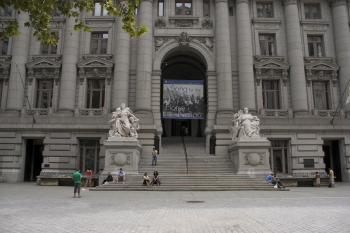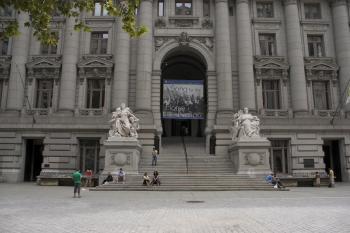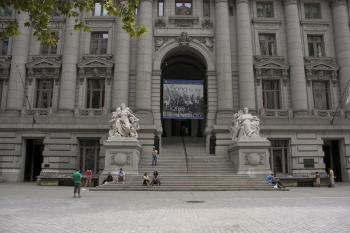Today, the first three floors of the grand building house the Smithsonian’s National Museum of the American Indian. The museum is open 364 days a year, and admission is free. The U.S. Bankruptcy Court for the Southern District of New York, and a number of smaller agencies, have offices there also. In 2003, the U.S. Customs and Border Protection established a lower Manhattan office at the Custom House, a reminder of the building’s original purpose.
Lower Manhattan Monument: The Alexander Hamilton US Custom House
The Dutch first established New York during the second half of the 17th century, when Dutch naval power dominated the world.

The Alexander Hamilton U.S. Custom House, built between 1902 and 1907, is located at One Bowling Green. It was designed by Cass Gilbert from Minnesota and represents a masterpiece of the Beaux-Arts style. Daniel Chester French sculpted the Four Continents, representing Asia, America, Europe, and Africa. Andrea Hayley/The Epoch Times
|Updated:
Reporting on the business of food, food tech, and Silicon Alley, I studied the Humanities as an undergraduate, and obtained a Master of Arts in business journalism from Columbia University. I love covering the people, and the passion, that animates innovation in America. Email me at andrea dot hayley at epochtimes.com
Author’s Selected Articles






